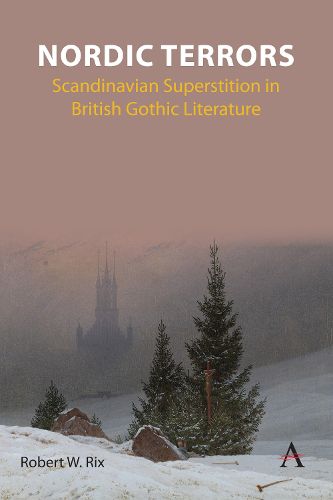Readings Newsletter
Become a Readings Member to make your shopping experience even easier.
Sign in or sign up for free!
You’re not far away from qualifying for FREE standard shipping within Australia
You’ve qualified for FREE standard shipping within Australia
The cart is loading…






In late eighteenth- and early nineteenth-century British literature, Scandinavia emerged as a place where Gothic terror took place. This book explores the extensive use of Nordic superstition in providing a vocabulary for Gothic texts as well as the cultural significance it had for writers attempting to understand Britain's northern roots. In Gothic publications, Nordic superstition sometimes parallels the representations of Catholicism, allowing writers to gloat at its phantasms and delusions. Thus, the casting of runes, runic spells and incantations, and necromantic communications (of which Norse tradition afforded many examples) could replace practices usually assigned to Catholic superstition. On terms of its cultural importance, however, Nordic lore did more than just fill in for hackneyed Gothic formulas. It is a key argument in the book that Nordic superstition presented less of an abject 'Other'. Nordic texts (primarily excerpts from the Edda and supernatural Scandinavian ballads) were seen as examples of the pre-Christian beliefs of what was known as the 'Gothic' (i.e., Germanic) peoples, which included the Anglo-Saxons. The book will trace the development of what can be called 'Gothic Gothicism' and situate this mode of writing in its wider literary, historical, political, and cultural contexts.
$9.00 standard shipping within Australia
FREE standard shipping within Australia for orders over $100.00
Express & International shipping calculated at checkout
Stock availability can be subject to change without notice. We recommend calling the shop or contacting our online team to check availability of low stock items. Please see our Shopping Online page for more details.
In late eighteenth- and early nineteenth-century British literature, Scandinavia emerged as a place where Gothic terror took place. This book explores the extensive use of Nordic superstition in providing a vocabulary for Gothic texts as well as the cultural significance it had for writers attempting to understand Britain's northern roots. In Gothic publications, Nordic superstition sometimes parallels the representations of Catholicism, allowing writers to gloat at its phantasms and delusions. Thus, the casting of runes, runic spells and incantations, and necromantic communications (of which Norse tradition afforded many examples) could replace practices usually assigned to Catholic superstition. On terms of its cultural importance, however, Nordic lore did more than just fill in for hackneyed Gothic formulas. It is a key argument in the book that Nordic superstition presented less of an abject 'Other'. Nordic texts (primarily excerpts from the Edda and supernatural Scandinavian ballads) were seen as examples of the pre-Christian beliefs of what was known as the 'Gothic' (i.e., Germanic) peoples, which included the Anglo-Saxons. The book will trace the development of what can be called 'Gothic Gothicism' and situate this mode of writing in its wider literary, historical, political, and cultural contexts.